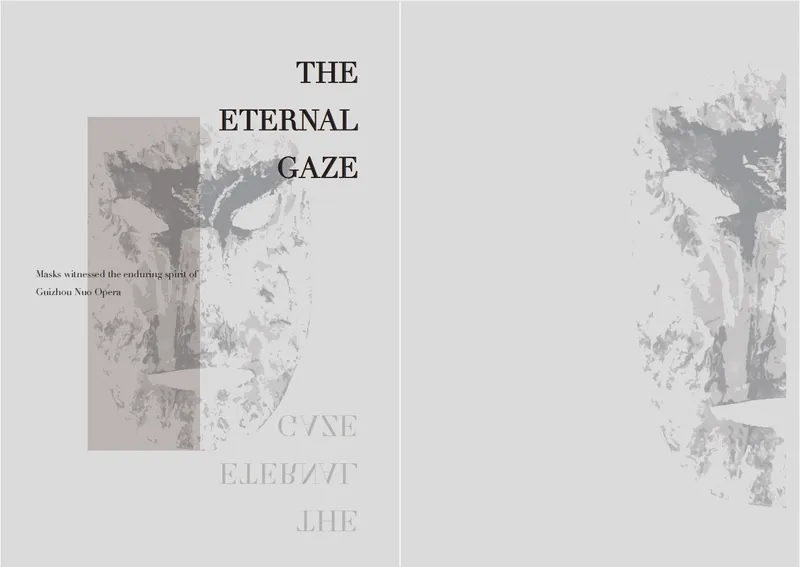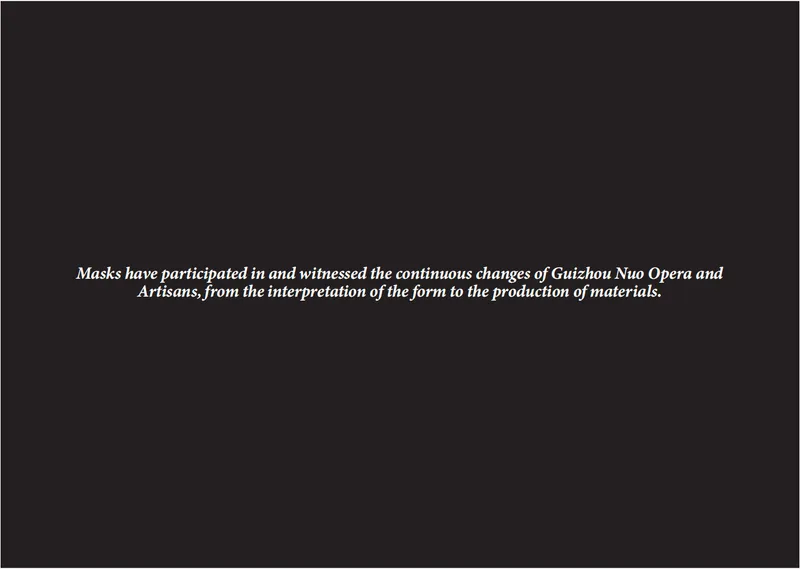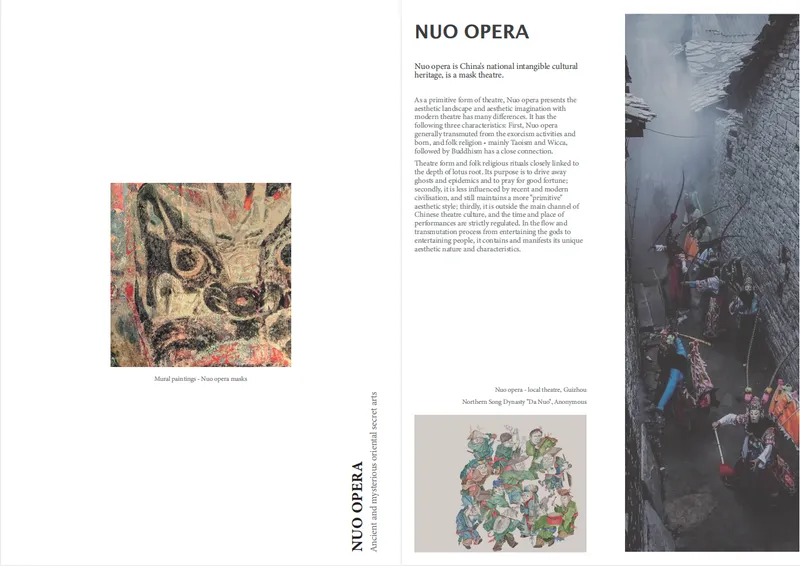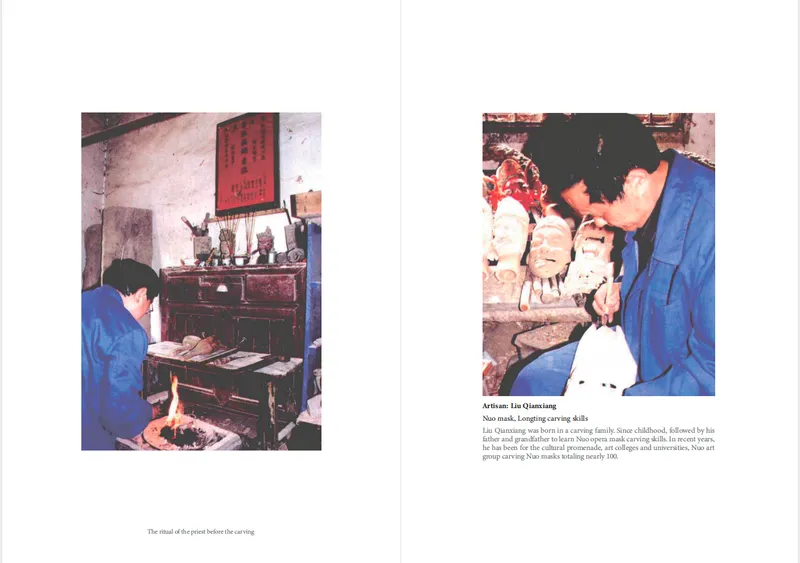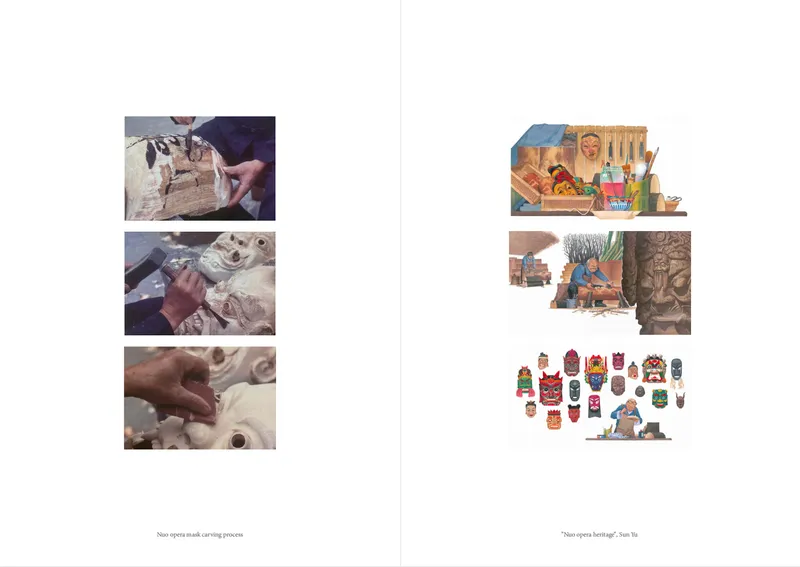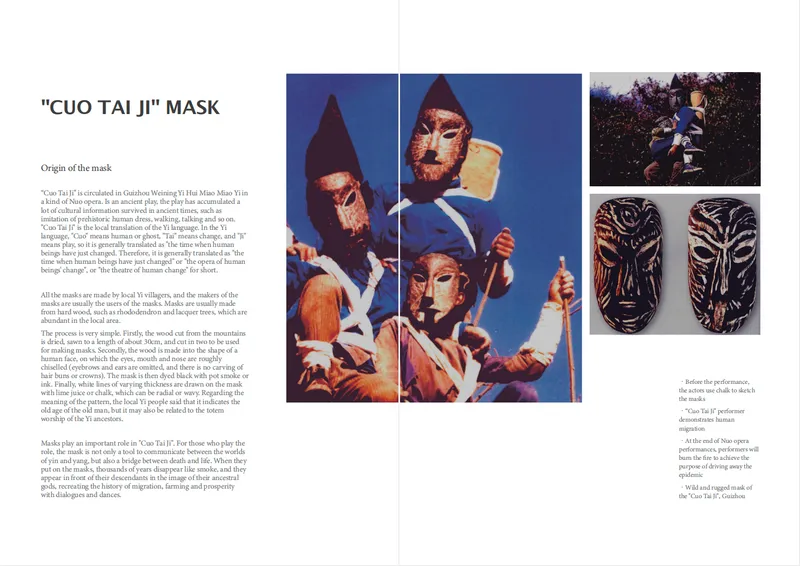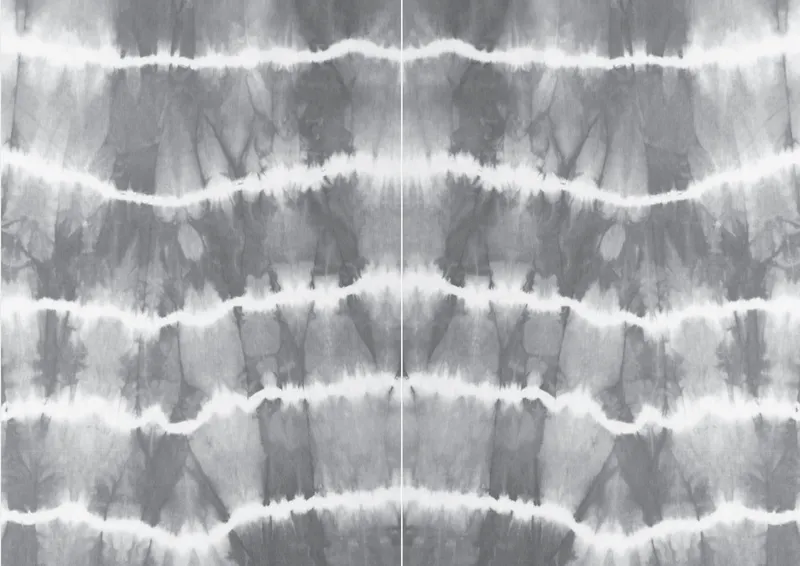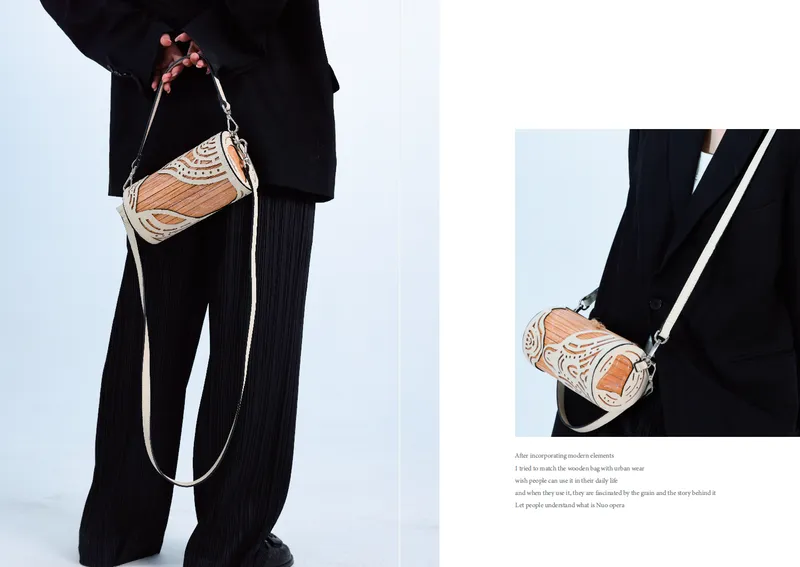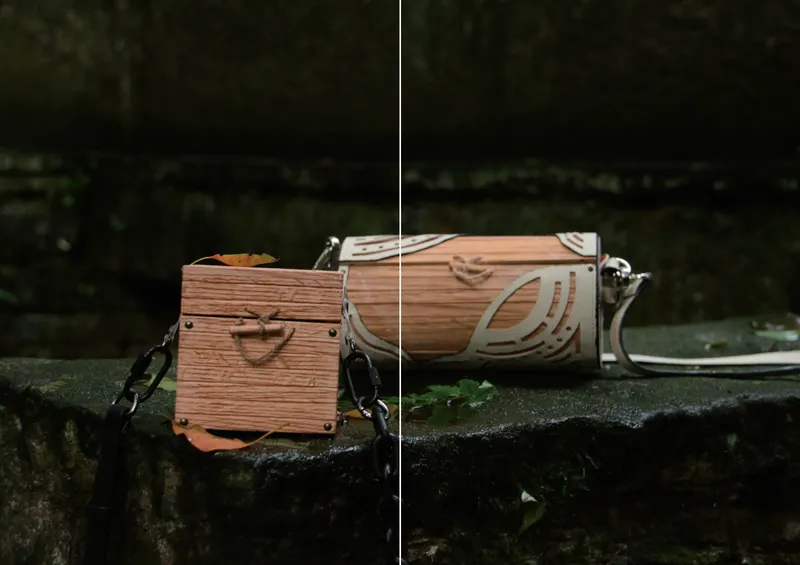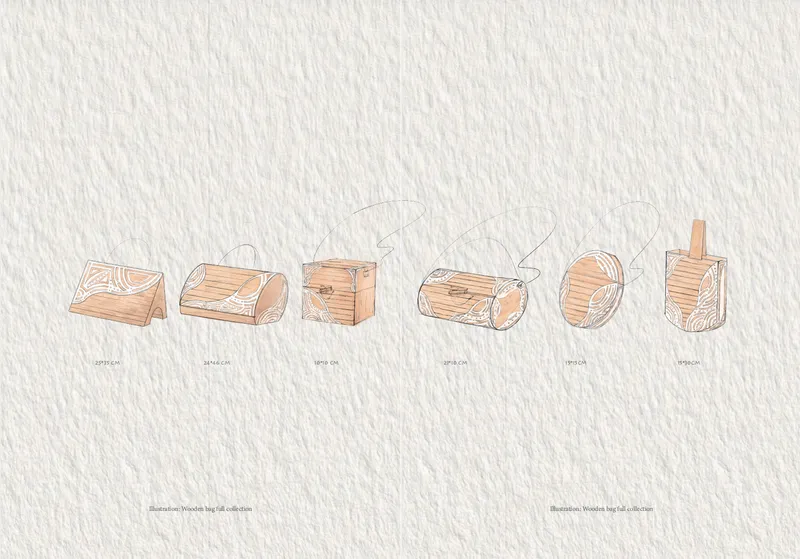The aim of the project is to focus on the preservation and empowerment of traditional Chinese cultural heritage and to avoid cultural appropriation. Work directly with artisans and communities to develop products that showcase their unique symbols and attributes to ensure the continuation of these traditions. In addition, through dialogue with the artisans, to understand the current state of survival and future development of the culture.Depending on the situation, new values and functions need to be assigned to the cultural product.
Take the example of Nuo opera, the rich cultural heritage of this traditional art form deeply rooted in Guizhou, China. Working with artisans and communities in Guizhou, China.To reinterpret the most original masks of Guizhou Nuo Opera using local natural materials and authentic traditional techniques developing products that showcase their unique skills and cultural heritage.
Create a collection of wooden bags through a collaboration between contemporary design and traditional craftsmanship. Reflecting the essence of these masks while infusing them with a modern twist.The project takes an integrated approach, combining cultural research collaboration, product design and community participation.
The project responds to the need for cultural sensitivity and appreciation. By making people aware of the cultural significance of Nuo opera, the project deepens understanding of the traditional art form and encourages respect for different cultures. Emphasis is placed on ethical practices and collaboration with the Nuo opera community to ensure that there is no distortion or appropriation in the celebration of this art form.In addition, jointly explore ways to make Nuo opera more sustainable and adaptable to contemporary times. Facilitate discussions with artisans on the future of Nuo theatre to ensure that Nuo theatre and related crafts are passed on from generation to generation.
At the intersection of tradition and innovation, I hope the project can contribute to preservation cultural empowerment, and artistic reinvention. Through dialogue with the artisans, it gives me the opportunity to become a purveyor of their stories, amplifying their struggles and aspirations, and allowing their voices to resonate with the cultural heritage.
